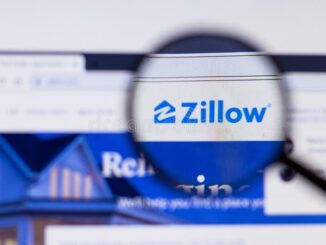
Like most of its publicly traded peers, Home Point Capital, the parent company of wholesale lender Homepoint, shrank in 2022 to adapt to a shrinking mortgage market. But its cost-cutting initiatives were not enough to return the lender to profitability. The possibility of Home Point being sold isn’t out of the realm of possibility, the company’s CEO said.
The Ann Arbor, Michigan-based company reported Thursday morning it suffered a non-GAAP adjusted net loss of $21.7 million in the fourth quarter, smaller than the $81 million loss in the previous quarter. The GAAP net loss was $36.8 million.
The company was unprofitable in 2022, reflecting the competitive landscape in the wholesale channel. It resulted in non-GAAP adjusted net losses of $190 million last year, compared to a $300,000 loss in 2021. Home Point’s GAAP net loss was $34.1 million in 2022.
“As 2022 was largely characterized by an increasingly challenging market, our primary strategic focus was on resetting the organization to navigate the current environment and best position Home Point for long-term sustainability,” Willie Newman, president and CEO, said in a news release.
“We have made significant progress on key initiatives that will enhance our liquidity, improve our operational performance, and serve as a springboard for growth and a path to profitability in 2023,” Newman added.
Home Point reported a total funded origination volume of $1.7 billion in the fourth quarter, down from $4.1 billion in the previous quarter. Overall production came in at $27.7 billion in 2022, a 71.6% decline compared to 2021.
Executives at the company believe the first quarter of 2023 will be the low point in the current origination cycle. In a call with analysts, they mentioned Mortgage Bankers Association’s (MBA) estimates projecting a 46% increase in origination volume in the second quarter of 2023 compared to the first quarter, propelled by a seasonal increase in home purchase activity.
With an improving housing market, Home Point expects to be operationally cash flow positive starting in the second quarter of 2023. “And we expect to be operationally profitable in the second half of 2023,” Newman told analysts.
But the headwinds in mortgage remain strong and Home Point’s viability as an independent company was questioned by analysts on Thursday morning.
Asked about the chances of selling the business or staying independent, Newman said:
“We are kind of open to having dialogue in either direction, but it is an environment where we do believe things will consolidate. And, you know, we’re kind of ever eyes open about that.”
Home Point is prioritizing margins
Margins are recovering at Home Point, according to the data. The company’s gain-on-sale margin attributable to correspondent and wholesale channels, before the impact of capital markets and other activity, was 86 basis points in the fourth quarter of 2022, compared to 51 bps in the previous quarter and 58 bps in the same quarter in 2021.
After the impact of capital markets and other activity, the gain-on-sale margin in the fourth quarter was just 22 bps. (It was even more dire in the third quarter, at just 4 bps.)
“We strategically prioritized margins over volume [in 2022],” Mark Elbaum, Home Point’s chief financial officer who is departing the company, told analysts.
Home Point has already started to feel competitors pulling back from aggressive pricing strategies. “The [first] quarter started off pretty tight, and it’s kind of loosened up a little bit.” United Wholesale Mortgage, the leader in the wholesale channel, is expected to trim back its pricing incentives.
Home Point reported $19.2 million in revenue in the fourth quarter, compared to $8.3 million in the previous quarter. In 2022, revenues were $255.6 million, 73,4% lower than the previous year.
In 2022, the company imposed cost-cutting initiatives, bringing the headcount down to 830 employees at year end from 4,000 the previous year. Ultimately, expenses totaled $63.1 million in the fourth quarter, compared to $115.7 million in the third quarter. It declined to $435 million in 2022 from $752.6 million in 2021.
Elbaum said the company took additional cost-cutting actions in the first quarter of 2023, with further headcount reductions. “In the first half of 2023, work continues on the expense side as we review contracts and facilities for additional cost reductions to support the current size of the organization,” Newman said.
Improving liquidity
Home Point’s servicing portfolio totaled $88.7 billion in unpaid principal balance as of December 31, 2022, down 5.8% quarter-over-quarter and 31% year-over-year. The company said it had 315,478 servicing customers in the fourth quarter, a decline of 4.8% from the third quarter and a 26% reduction compared to the same period in 2021.
During the fourth quarter, Home Point sold about $6 billion UPB in Ginnie Mae servicing for proceeds totaling $87.8 million.
Executives said moving forward, the company will continue to opportunistically sell Ginnie Mae servicing rights and strategically right-size its warehouse lines of credit to minimize associated costs and more efficiently operate in an increased interest rate environment.
Regarding its liquidity, the company had $97.2 million in cash and cash equivalents as of December 31, 2022, and a total available liquidity of $662.5 million.
Home Point completed the sale of its ownership stake in Longbridge Financial for $38.9 million in cash in October 2022. It also had a gain in December 2022 related to the sale of its equity interests in HPAM and its wholly-owned mortgage servicing subsidiary HPMAC.
Home Point’s share was trading at $1.91 on Thursday around 10:00 AM EST, up 1.6% from the previous close.



